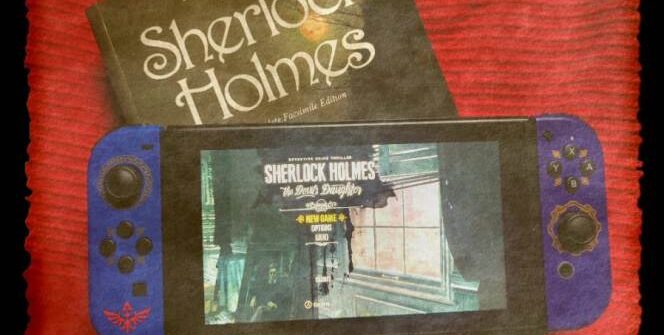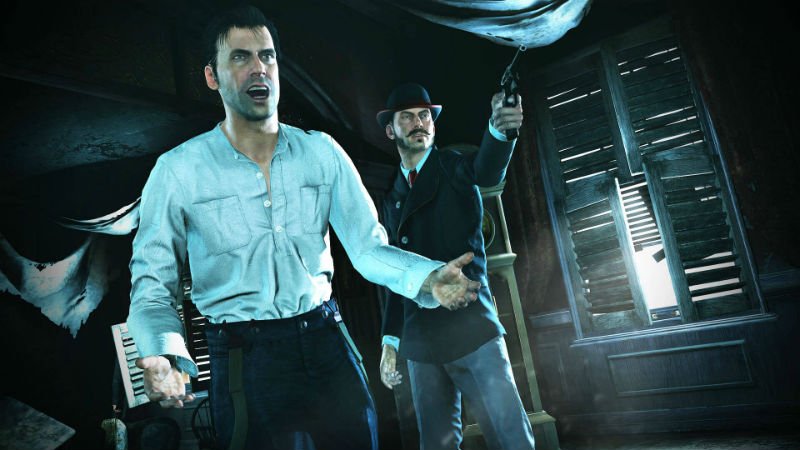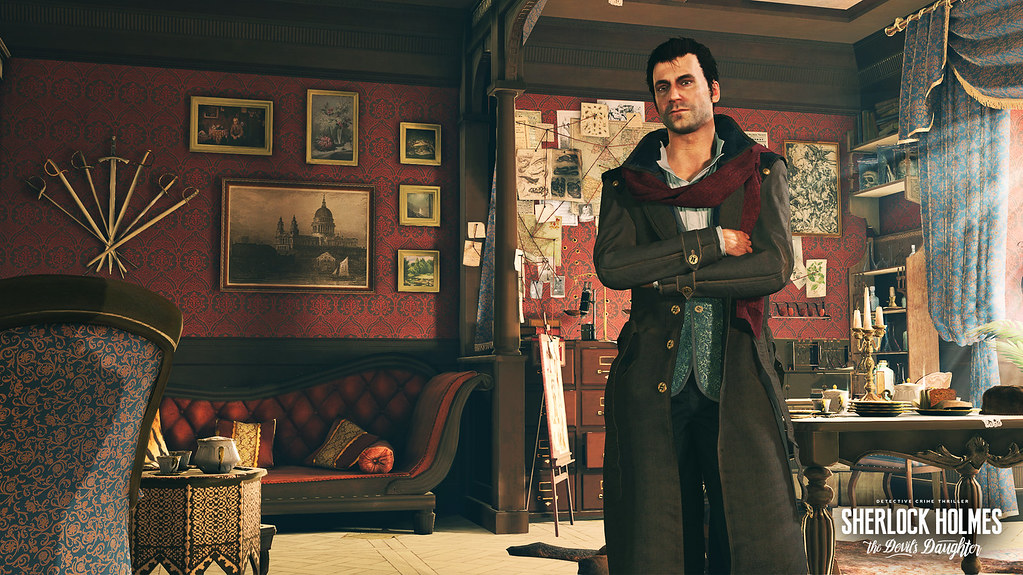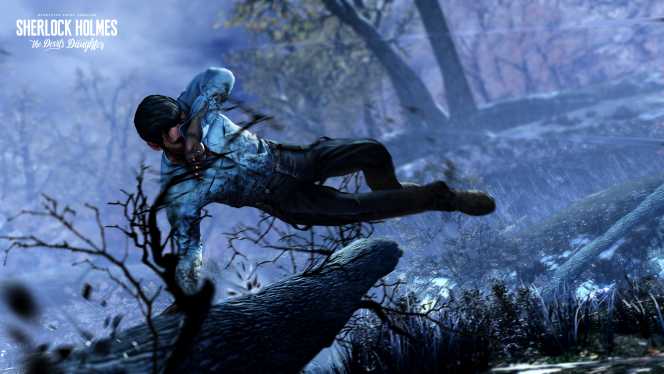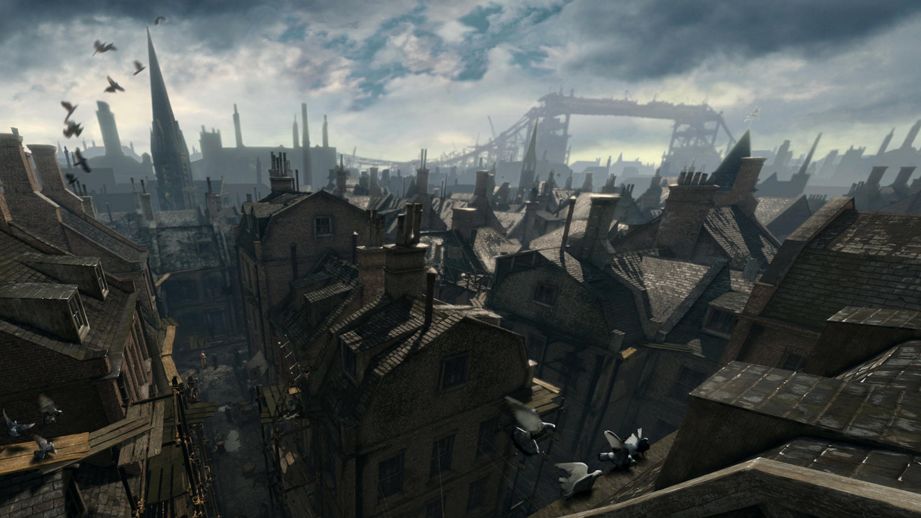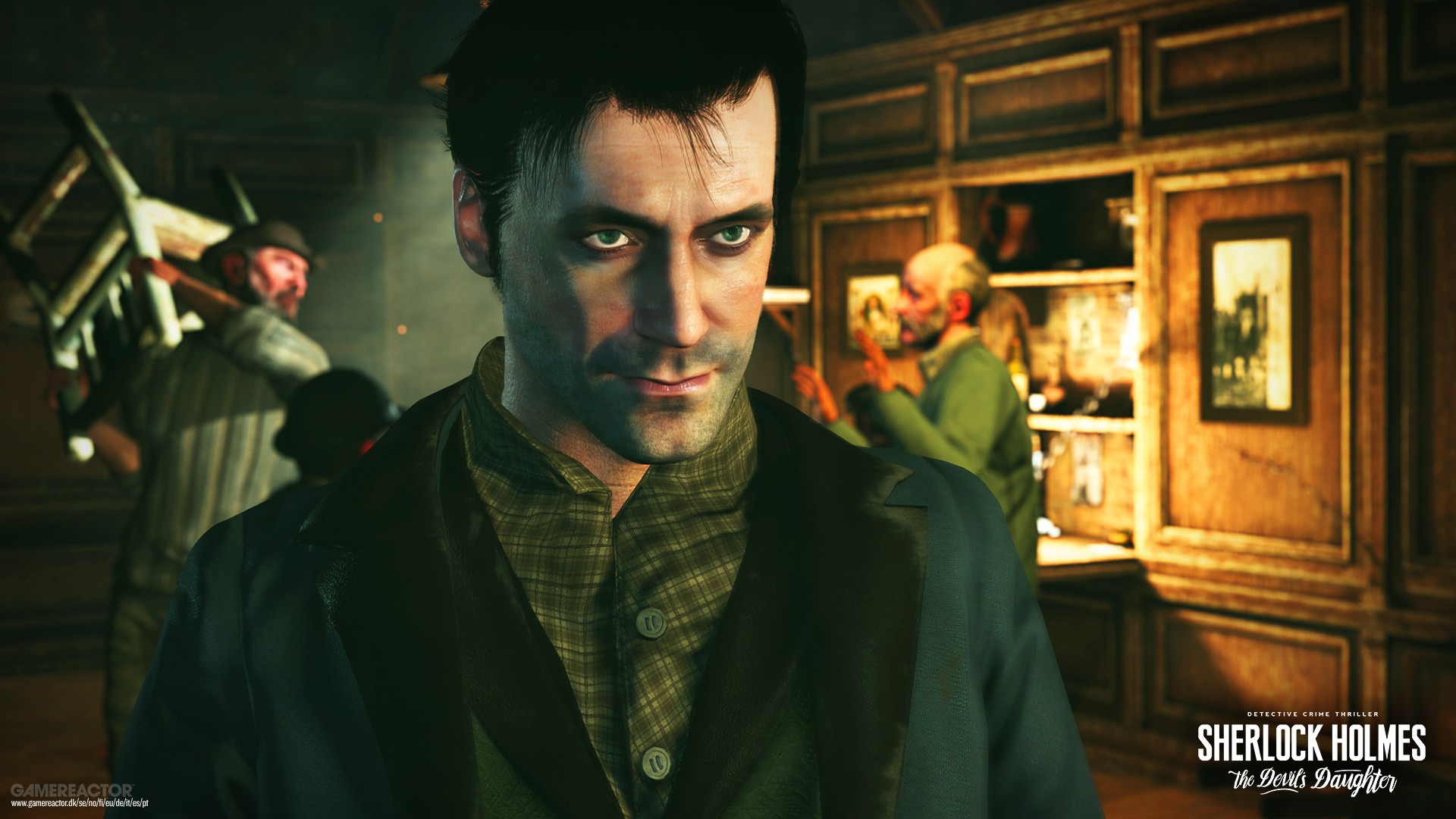REVIEW – Sherlock Holmes is perhaps one of the most adapted detectives in history, with several rival versions existing on television right now, besides Robert Downey Jr.’s own movie version. The Frogwares’ titles were added to this ever-expanding collection of ever-changing adaptations of the great detective’s adventures in 2002. The Devil’s Daughter is actually their eighth game to utilise the hero and the interconnected world.
Luckily, the narrative and gameplay mechanics don’t require any familiarity with what’s come before since the story has no ties to other games from Frogwares. There are, of course, hints that those acquainted with the novels of Sherlock Holmes will recognise, but this only enhances the experience rather than taking away from it for those who haven’t spent as much time with Sir Arthur Conan Doyle’s novels.
Five devilish cases
The game extends over five cases, with each around two and a half hours long of gameplay. The first four of these cases are self-contained, but the last case’s narrative weaves through the events and the decisions you made. While the tales of those four individual cases are pretty characteristic of Sherlock Holmes adventures, still, it’s the overarching story that is more interesting.
In this Holmes game, the great detective has a daughter called Kate, who out of the blue returns to Baker Street after her boarding school is flooded early in the story. However, she adopted, and actually, the tale of how she came to be in Holmes’ care forms an essential element of the game’s mystery.
Another story element is that Holmes and his daughter have a somewhat broken relationship, and the tension between them will only rise throughout the game. It only worsens with the introduction of Holmes’ new neighbour, Alice, who will sympathise with Kate instantly, whereas Holmes stays more watchful of her links to the occult and supernatural.
The story is fine
Although exploring Holmes’ family life and the troubles of raising a daughter might appear like a somewhat odd topic for a detective story, it works better than anticipated, even though some boring clichés were missing from the former Holmes game.
While we are investigating each case, some “unique” mechanics, mini-games and puzzles will appear, which are unfortunately more of an annoying gimmick, than ideas to keep the game feeling fresh. For example, in the first case, you have to clean a chimney and try to shine a mark’s shoes, while the second case has you competing in the finals of a lawn bowls tournament. At one point, you even explore a Mayan temple, solving Tomb Raider-esque puzzles.
Do you have a clue?
However, investigating cases and piecing together clues is at the core of the game, and there’s a fair amount carried over from Crimes & Punishments in this regard. The game retains the ‘deduction board’, where key clues are added to Holmes’ mental picture of the crime. Solving a case requires you to draw the correct connections from the clues you’ve found, with every crime featuring multiple solutions, although only one correct one. It’s an excellent idea and one that forces you to make some decisions about information and various characters’ motivations.
Character portraits have also been brought over from the previous game, which sees you replicate Holmes’ famous observation skills. You quickly size up various character elements, such as their attire or marks on their skin, to gain insights into their personality and past. It can be tricky to draw an accurate portrait of a character, though, with some of the observations giving you multiple inferences.
It’s quick time again.
Annoying quick-time events also make an appearance, although mainly in the game’s occasional action sequences. When woven into some conversations, they are more attractive, since they force you to pay attention and select the right clue to confront a character with. It’s certainly not a branching conversation system, but it does enough to make you feel like an actual participant in conversations.
All of these other elements are wrapped around a usual point and click adventure title that allows you to explore surprisingly large chunks of Victorian London. That’s not to say it’s an open-world title – it most certainly isn’t – but most of the locations you visit contain the streets around the building you want, with Londoners inhabiting them, albeit not particularly dynamic ones.
It’s an ugly world out there
Unfortunately, there are many negative elements to discuss as well. While the gameplay and narrative are reasonably compelling, on the other hand the graphics are pretty bad. Frame rate drops and screen tearing just aggravate things, although weirdly they occur much more frequently in cut scenes.
There are also literally tons of loading screens! While the first time you see it, it’s a nice idea that you can always see Holmes travelling in a carriage around the city during these moments, it will become tiresome later. You can, at least, enter the deductions system and assemble your current clues or check out your case book, but even these distractions do little to improve the experience of sitting through long and frequent loading screens.
Nintendo Switch experiences
Interestingly enough, the graphics on Nintendo Switch – especially in tablet mode – seem a lot less “ugly” – probably because we’re used to much poorer graphics on Nintendo Switch and because the Ukrainian team has eliminated the screen tearing as mentioned above, and the frame rate problems. Somehow the picture is also sharper, but this is also more true for the tablet mode.
The long loading time is also true for the Switch version, but it’s understandable on this hardware.
Overall, this game is somehow a more pleasant experience on the Switch, but it still doesn’t come close to Crimes & Punishments. You can tell that the Ukrainian team is making a big effort to add as many of their titles as possible to Swith, as this is the third game they’ve released for the small hybrid console, along with The Sinking City, and all of them have been great ports.
Not the best Holmes
Worse, controlling Holmes and the occasional ancillary character feels very floaty and imprecise. While many of the environments you encounter aren’t that complex to navigate, this only makes it more frustrating when you find yourself briefly stuck against a chair. Even Holmes’ walking animation is lacking, never really leaving you with a sense that he’s actually inhabiting the world.
As for the voice work, while it’s never actually bad, it just feels like it’s lacking something. Some of the characters do work well, Watson in particular, but Sherlock’s dialogue can feel quite inconsistent in his tone, and the interactions with his daughter don’t have much emotional depth. I will say that the game’s finale is a notable exception to this, but most of their conversations feel stilted.
All in all, it’s a shame about this part because Aniko and I were big fans of the previous one, but unfortunately, Sherlock Holmes: The Devil’s Daughter doesn’t reach the standard set by Crimes & Punishments. Since that game was also released for Nintendo Switch, those who missed it should get it on the Japanese console instead. By the way, the only other Holmes game on Nintendo Switch is Sherlock Holmes: Chapter One (which you can read a review of here). By the way, while that game isn’t perfect, it’s a class improvement over this one, so let’s hope the Ukrainian team can successfully “squeeze” it onto Nintendo Switch.
-BadSector-
Pro:
+ Interesting take on the characters and story
+ Deduction system works well
+ Good mix of mechanics and mini-games keeps things fresh
Against:
– Quick time, gameplay issues Floaty controls
– Bad graphics, frame rate drops, screen tearing, long and frequent loading screens
– Voice acting feels hollow at times
Publisher: BigBen Interactive
Developer: Frogwares
Genre: Adventure
Release date: May 27, 2016
Sherlock Holmes: The Devil’s Daughter
Gameplay - 6.2
Graphics - 5.4
Story - 7.4
Music/audio - 6.2
Ambiance - 6.4
6.3
OKAY
It’s a pity to give Sherlock Holmes: The Devil’s Daughter such a week review, but I simply cannot give it a better one. The story is okay, if a little unusual for a Sherlock Holmes tale. The collection of mechanics and mini-games are more of an annoying gimmick. What’s more frustrating is that even though the game has a lot of issues on a technical level, it’s not actually buggy. You never fall through the world or find yourself unable to progress in a case, you’re just left with persistent frame rate, screen tearing and control issues that drag down a solid, if unexceptional, game.

